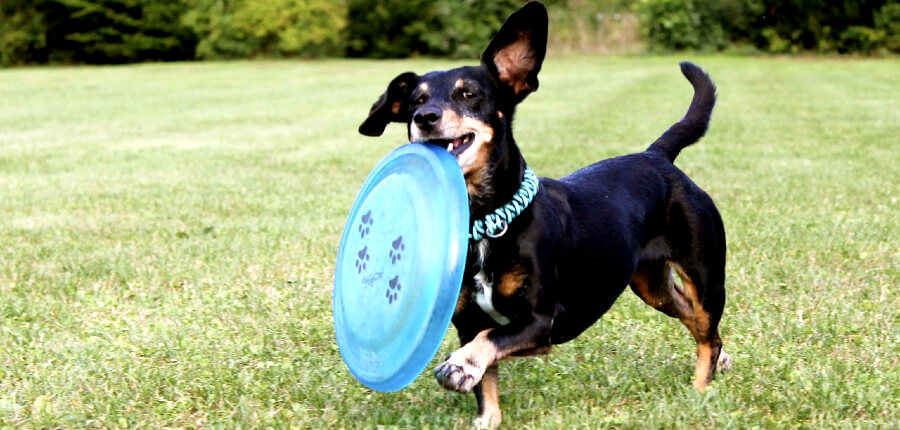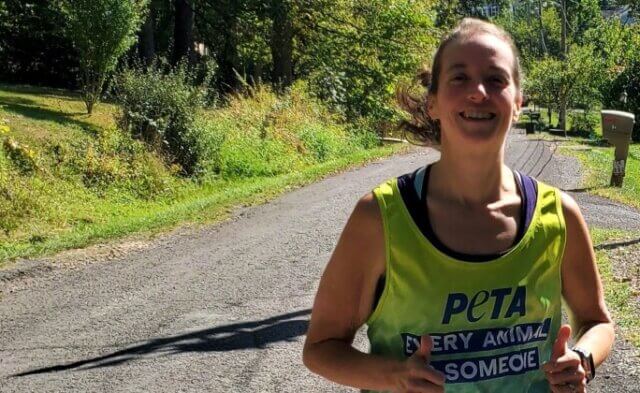Getting healthy and fit in the new year is an admirable resolution. But while we’re doing downward dogs and cat stretches, what are our dogs and cats doing? More than likely, they’re just waiting—staring at the wall and wishing they could enjoy a little exercise, too.
Staying active is just as important for our animal companions as it is for us, but they don’t have the luxury of going to the gym or out for a walk or run when they feel like it. They depend on us to give them opportunities and encouragement to get moving.
Letting animals become “chonky” isn’t cute or kind. Obesity reduces the length and quality of their lives: Obese cats are at least three times as likely to develop type 2 diabetes, and obese cats and dogs face increased risks of kidney and heart disease, osteoarthritis and many types of cancer, among other serious health problems.
If you have an animal friend who could stand to shed a few pounds, work with your veterinarian to rule out health conditions that may cause weight gain and to create a safe weight-loss plan. This is especially important for cats, who can suffer a life-threatening liver condition called hepatic lipidosis if their calorie intake is reduced too drastically.
If your animals’ current “workout” consists of walking from the couch to the food bowl, it’s time to step it up. For dogs, daily walks are a must. Jaunts around the neighborhood or park are excellent exercise (for the one holding the leash, too!), and they provide pups with much-needed mental stimulation and social outlets. Sniffing the “news” on trees and hydrants and greeting other friendly dogs and humans along the way might be the highlight of their day.
And it’s their walk, so let dogs set the pace (and choose the route, when possible). Be patient while they sniff to their heart’s content, and always use a comfortable nylon harness—not a painful choke or prong collar, which can injure dogs’ necks.
Get your pup’s heart pumping with other fun activities, too, like chasing Frisbees or balls in a fenced area, romping at a dog park or swimming (under your constant supervision). Never confine your dog to a crate, which is terribly cruel psychologically and can cause their muscles to atrophy. If you have to go out to work, give them a good walk (30 minutes or so) before you leave, and let them have the run of the house while you’re away. Puppy-proof if you have mischievous dogs (put fragile or dangerous items out of reach). Leave them plenty of chew toys and arrange for a trusted person to take them for a mid-day walk if you can’t come home on your lunch break.
Getting cats active may take a bit more creativity, but it’s well worth the effort. As PETA president Ingrid Newkirk observes in her new book, 250 Vital Things Your Cat Wants You to Know, “Cats are thoughtful, clever, and innovative. … They need things to play with, to figure out, and to think about, or they will go quietly nuts, just as you would.”
Interactive wand-type toys that you dangle and drag along the floor or furniture are a great way to ensure that kitties get their cardio, as are motorized balls, remote-controlled mice and laser pointers. Paper bags (with the handles removed), cardboard boxes, packing paper and rolled-up balls of foil can also provide hours of free fun and exercise for cats. Aim for at least two 10- to 15-minute play sessions daily, preferably at dawn and dusk, when cats are most active. Keep things interesting by rotating toys weekly and sprinkling them with catnip.
Keeping cats indoors is vital to protecting them from contagious diseases, speeding cars, predators on four legs and two, poisons and countless other dangers. So make your kitties’ home their castle and encourage them to jump, climb, stretch and explore with multistory cat trees, scratching posts, perches and tunnels. They can also enjoy fresh air and outdoor exercise in a securely enclosed “catio” or on a leash with a form-fitting harness, under your watchful eye.
Here’s to a happy, healthy New Year—for you and your animal companions.





